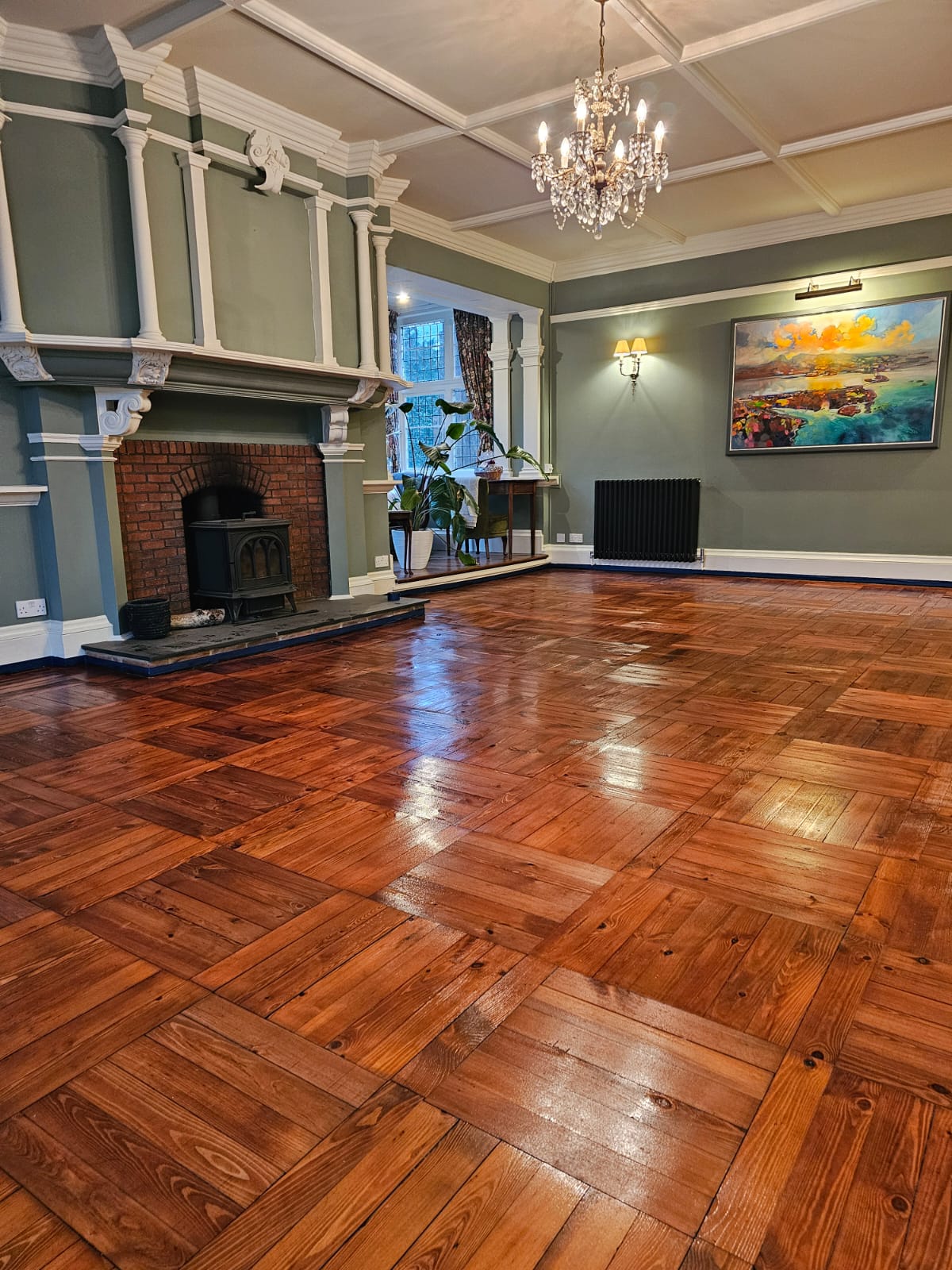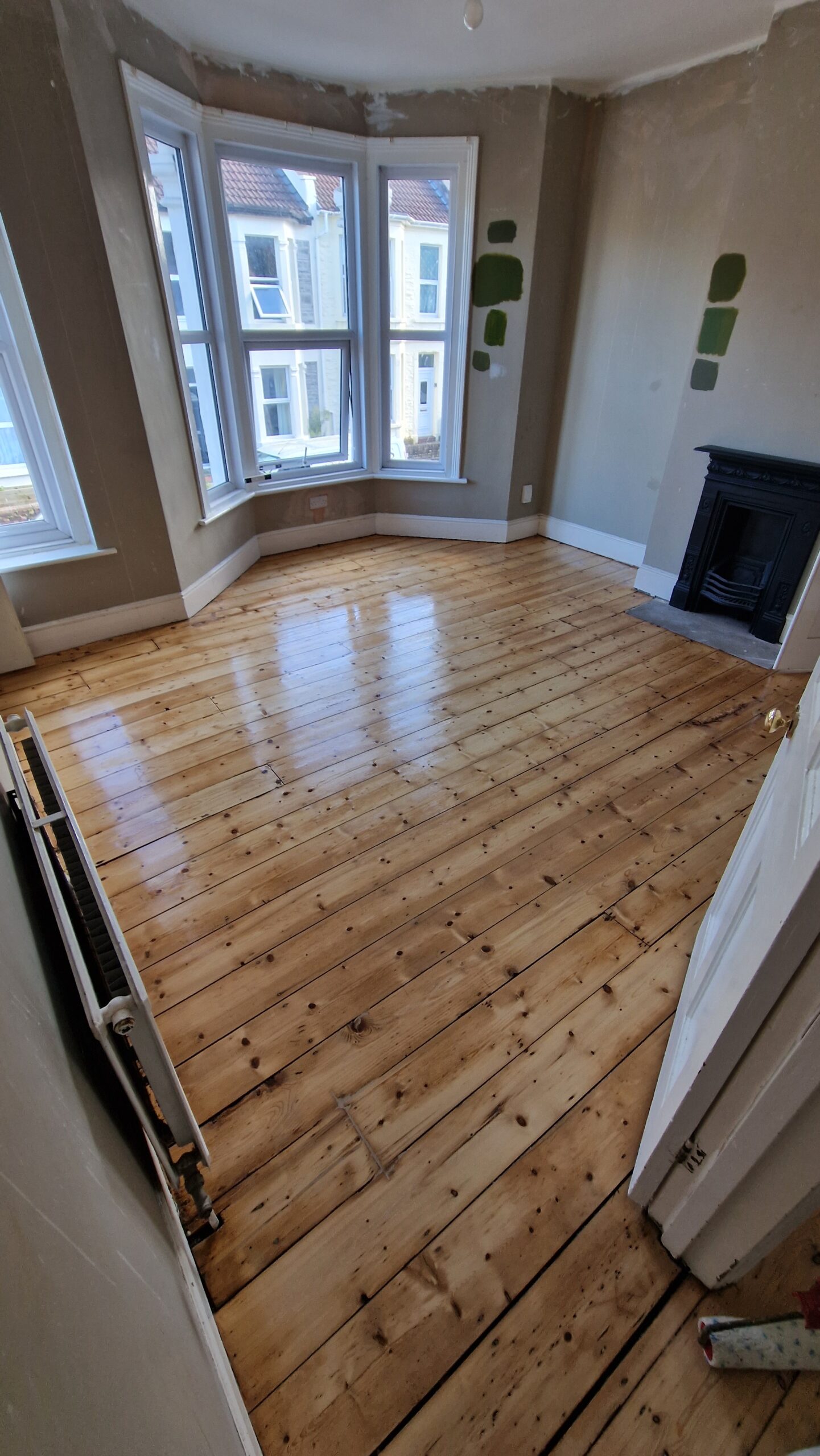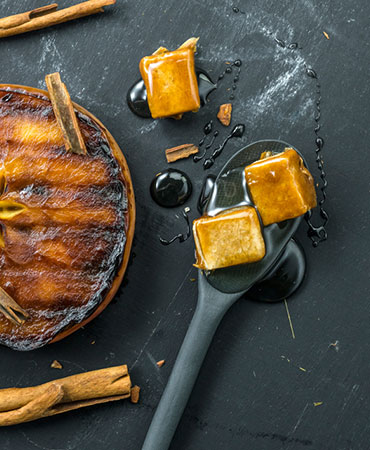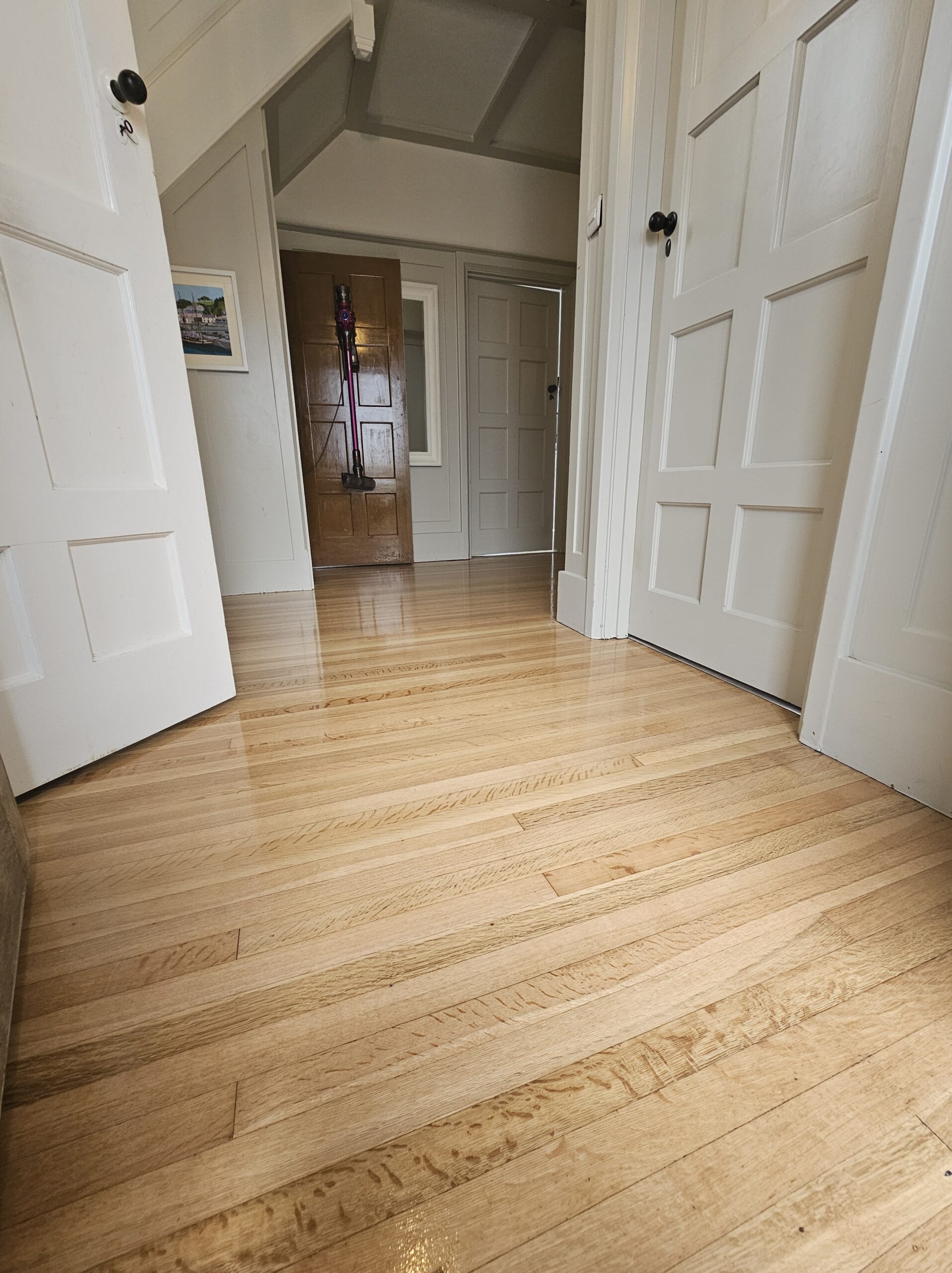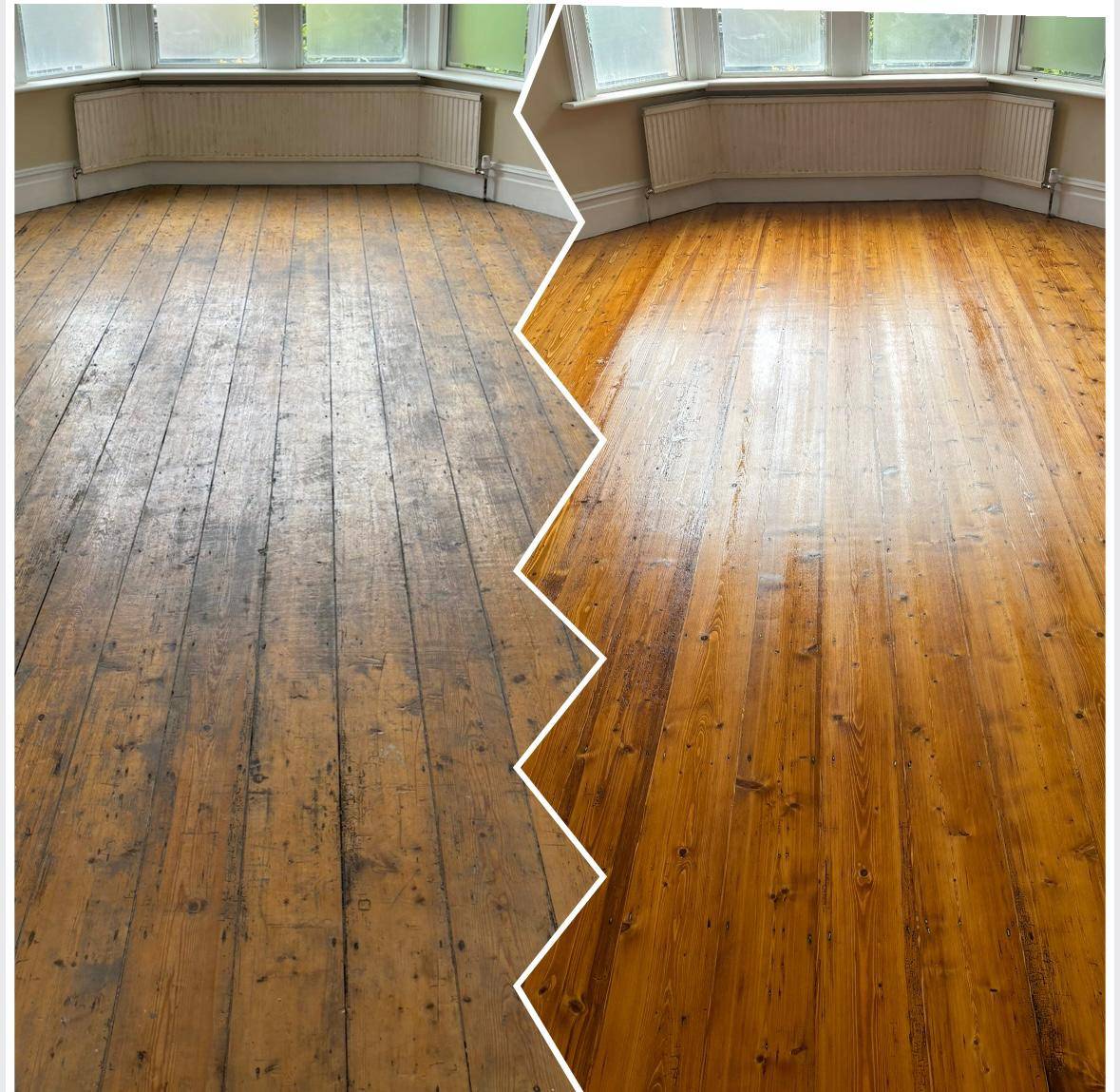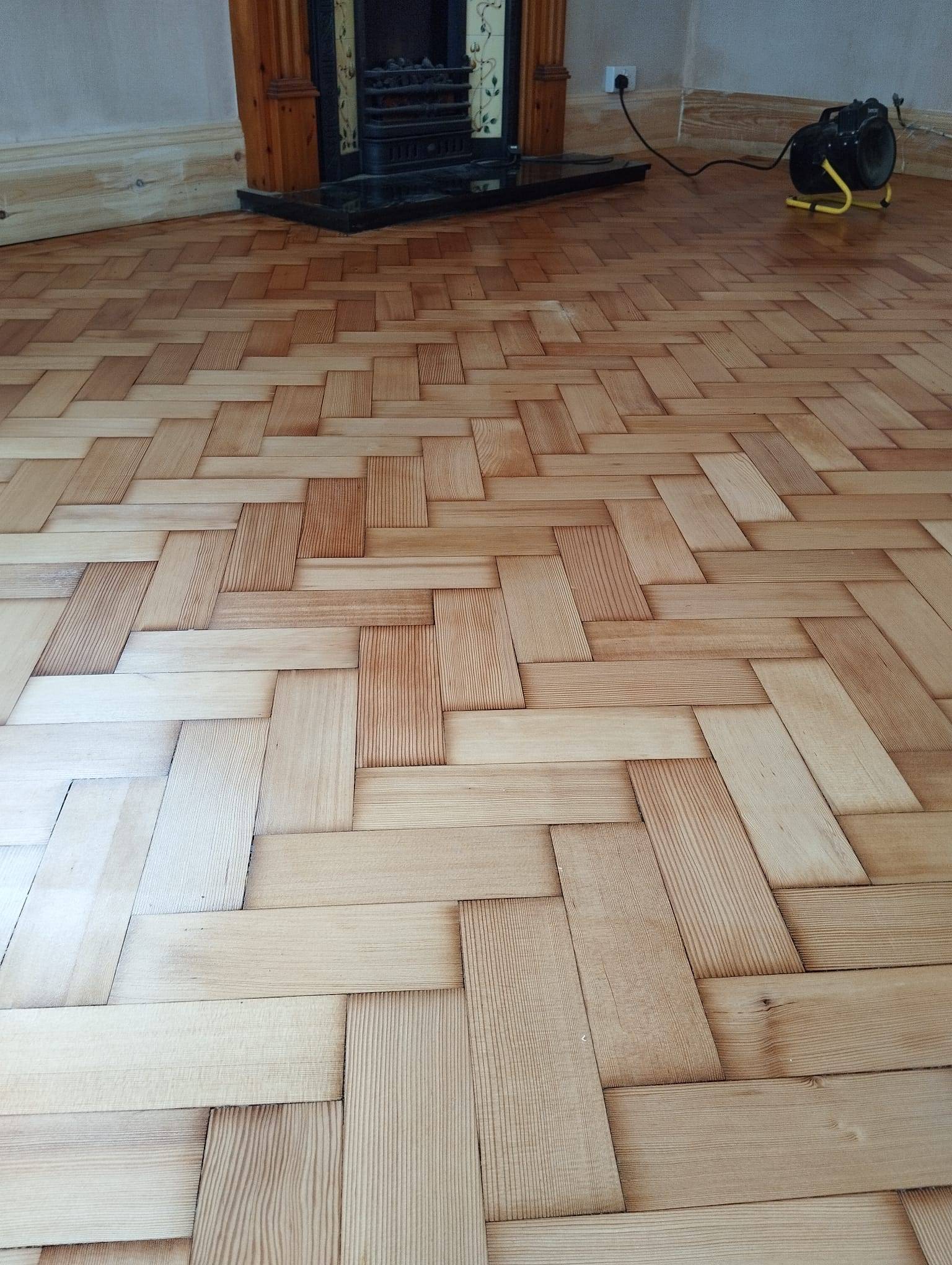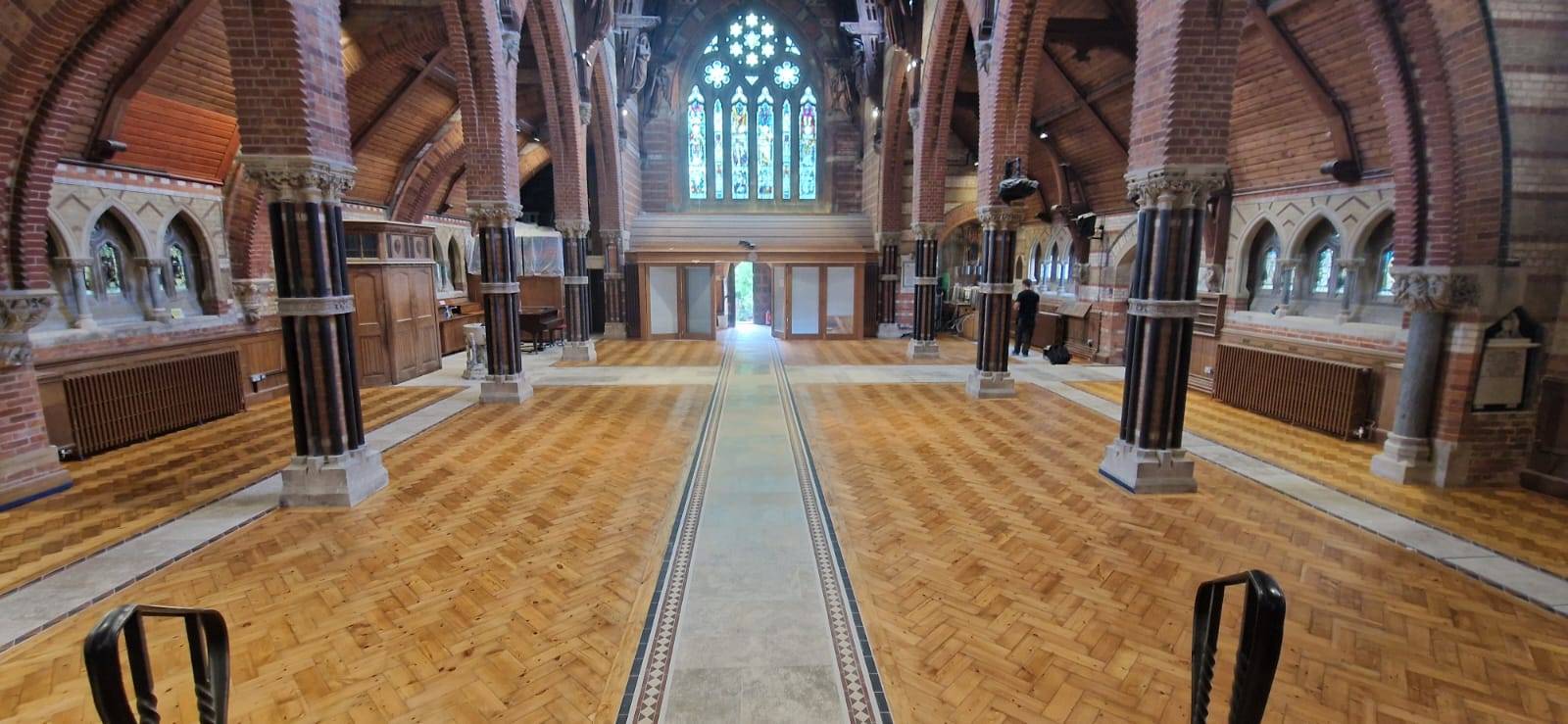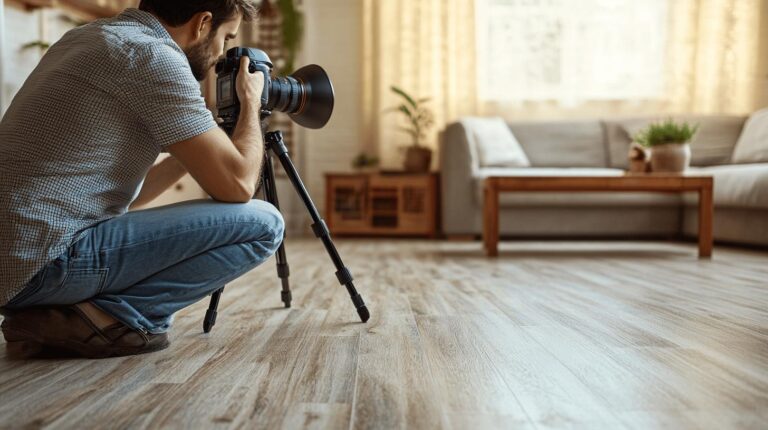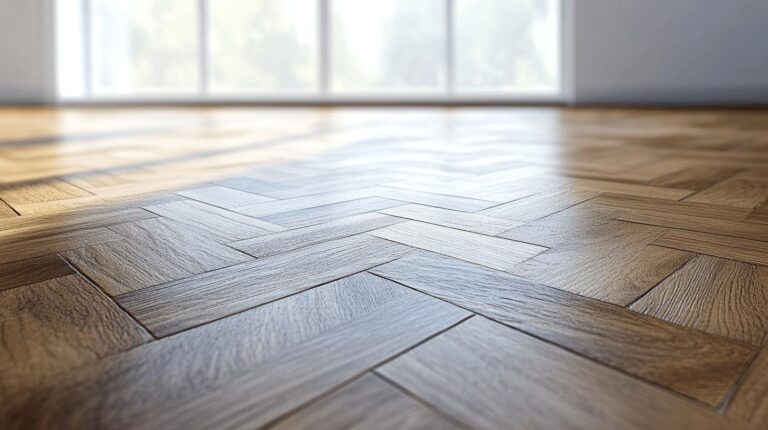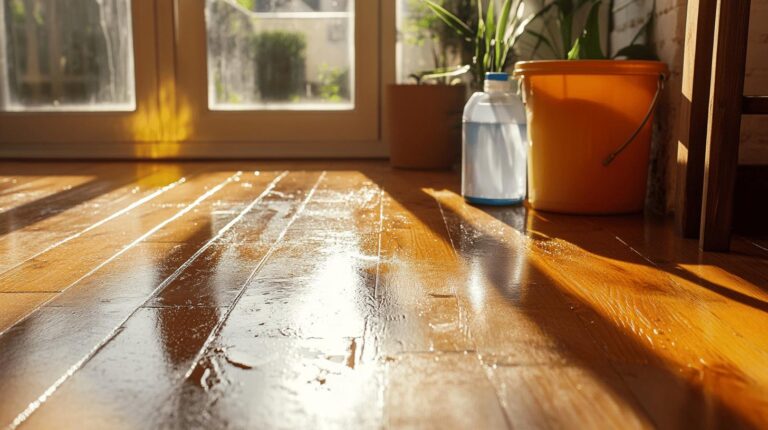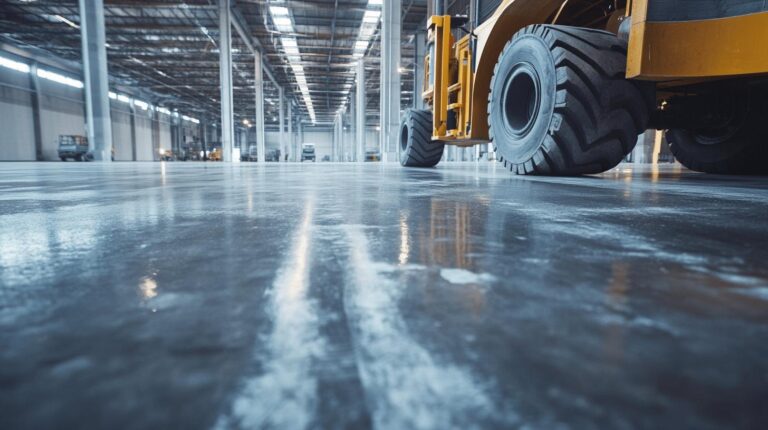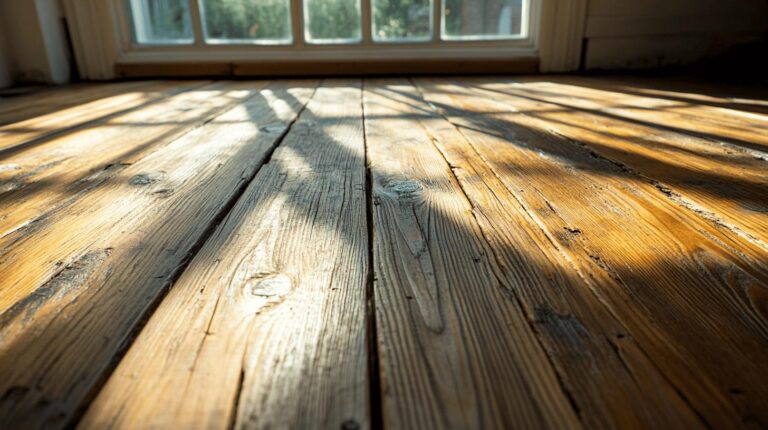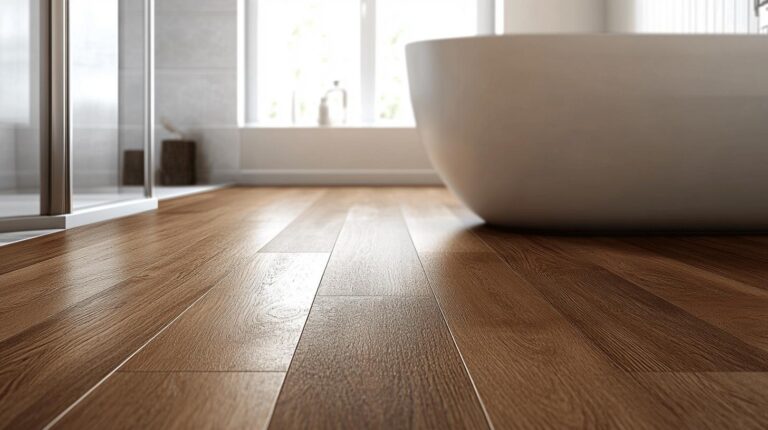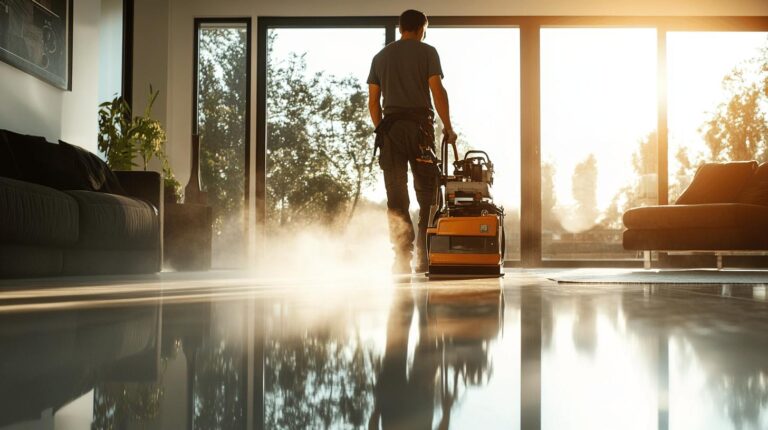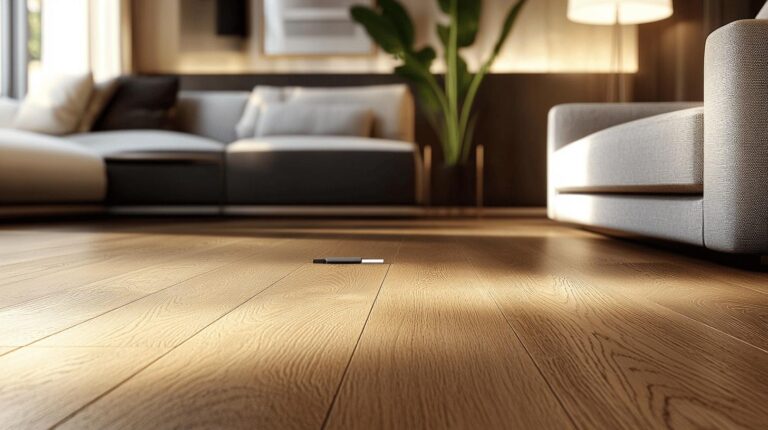Are you aware that the choice of finish for wood floors in hospitality spaces can make or break the durability and allure of an establishment? In the bustling world of hospitality, where footfall is constant and aesthetic appeal is paramount, selecting the right wood finish is not just about beauty—it’s about resilience, safety, and maintenance. This article offers a comprehensive guide on choosing a finish that complements high-traffic spaces while enhancing the wood’s natural charm. Discover how specific finishes can transform your floors into a seamless blend of functionality and elegance.
Understanding Wood Floor Finishes for Hospitality Spaces
In hospitality spaces, the choice of wood floor finishes is essential due to the demanding nature of high-traffic environments. Finishes not only protect the wood from scuffs, scratches, and stains but also enhance its water and stain resistance, increasing the floor’s longevity and maintaining its aesthetic appeal. For establishments like restaurants and hotels, which see a constant influx of guests, selecting the right finish can significantly influence the wood’s durability and overall performance. Commercial solid hardwood and engineered wood floors each offer unique benefits that can be optimised with the appropriate finish, ensuring that the flooring withstands daily wear while retaining its elegance.
Wood floor finishes come in various forms, each offering distinct advantages for hospitality settings:
- Polyurethane: Known for its toughness and durability, it provides excellent protection against scratches and water damage.
- Oil-based: Offers a rich, warm finish that enhances the wood’s natural beauty and provides moderate protection.
- Water-based: Provides a clear finish that preserves the wood’s natural colour, with a quicker drying time and lower odour compared to oil-based finishes.
- Wax: Offers a traditional, low-lustre finish that can be easily repaired, ideal for a more rustic look.
- Varnish: Provides a hard, protective coating that enhances the wood’s resistance to chemicals and abrasions.
Finishes play a crucial role not only in the functionality of wood floors but also in their aesthetic appeal. The right finish can accentuate the wood’s natural grain, enhancing the ambience and sophistication of hospitality spaces. By choosing a finish that complements the interior design and meets the practical demands of the environment, hospitality venues can achieve a balance between beauty and durability.
Evaluating Durability and Maintenance of Wood Floor Finishes
The durability of wood floor finishes is a critical consideration, especially in hospitality settings where foot traffic is high. Different finishes provide varying levels of protection against wear and tear. Polyurethane, for instance, is renowned for its robustness, offering superior resistance to scratches and water damage, making it ideal for bustling environments. In contrast, oil-based finishes, while offering a warm and rich aesthetic, may not match the protective prowess of polyurethane but do impart moderate resistance to daily wear. Water-based finishes are less durable compared to polyurethane but are preferred for their low odour and quick drying times, which can be beneficial in areas with tight maintenance schedules.
Maintenance requirements for wood floor finishes can significantly impact their longevity and appearance. Regular upkeep is vital to ensure the finish continues to protect the wood effectively. Polyurethane finishes demand less frequent maintenance due to their toughness, whereas oil-based finishes may require periodic reapplication to maintain their protective qualities. Water-based finishes, despite their ease of application, may necessitate more frequent touch-ups to uphold their visual clarity. Wax finishes, known for their rustic appeal, require regular buffing and reapplication to maintain their protective layer, while varnish finishes, though durable, might need occasional refinishing to address wear in high-traffic areas.
Balancing durability and maintenance is crucial in selecting the right finish for hospitality wood floors. While a highly durable finish may reduce maintenance frequency, it should also align with the aesthetic and functional needs of the space. Regular maintenance, tailored to the specific finish type, ensures that the wood flooring remains attractive and resilient, supporting the demanding environment of hospitality venues.
Aesthetic Appeal and Design Compatibility of Finishes
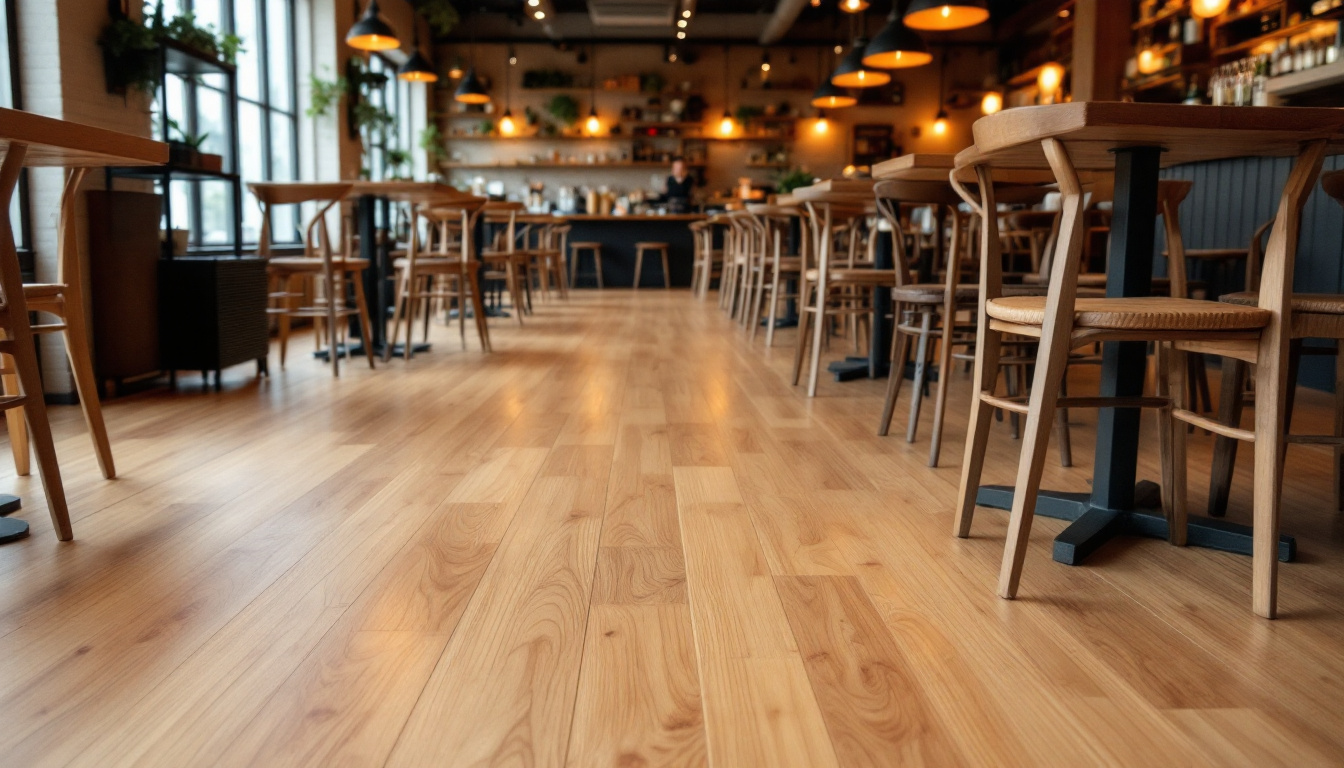
Wood floor finishes play a vital role in enhancing the aesthetic appeal and style of hospitality spaces. The right finish not only safeguards the floor but also complements the interior design, creating an inviting atmosphere. In restaurants, hotels, and similar environments, the choice of finish can significantly influence the perception of warmth and sophistication. Using finishes that highlight the natural beauty of wood flooring, such as oak, provides a luxurious feel that laminate and LVT flooring cannot achieve. Selecting finishes that align with the interior theme ensures the flooring becomes a cohesive element of the overall design, enhancing both ambience and aesthetic appeal.
Matching Finishes to Design Themes
- Modern Minimalism: Water-based finishes offer a clear, subtle sheen that complements clean lines and a minimalistic aesthetic, highlighting the simplicity of modern design.
- Rustic Charm: Oil-based finishes provide a rich, warm tone that enhances the natural grain of the wood, lending a rustic and inviting feel suitable for cosy, country-style interiors.
- Classic Elegance: Polyurethane finishes deliver a high-gloss look that adds a touch of elegance and sophistication, ideal for traditional or upscale dining environments.
Finishes have a profound visual impact on the natural wood grain, affecting how the wood’s textures and patterns are perceived. A well-chosen finish can accentuate the grain, adding depth and character to the flooring. This enhances the space’s aesthetic by drawing attention to the wood’s inherent beauty, making it a focal point within the hospitality setting.
Slip Resistance and Safety Considerations
Slip resistance is a critical factor when selecting wood floor finishes for hospitality environments, where the safety of patrons and staff is paramount. High-traffic areas, such as restaurant dining rooms and hotel lobbies, necessitate flooring solutions that minimise the risk of slips and falls. Finishes with enhanced slip resistance not only ensure safety but also contribute to the overall durability of the floor. These finishes must also prevent moisture and mould growth, maintaining both hygiene and safety. It is essential to choose finishes that provide these protective attributes, ensuring the flooring remains safe and effective in demanding hospitality settings.
- Polyurethane: Offers a durable surface with enhanced slip resistance.
- Oil-based: Provides moderate slip resistance and enhances the natural texture of the wood.
- Water-based: Known for its quick drying time and moderate slip resistance.
- Wax: Offers a traditional finish with slip-resistant properties when buffed regularly.
Compliance with health and safety standards is non-negotiable in hospitality settings. Wood floor finishes must adhere to local and federal regulations, ensuring they provide not only aesthetic appeal but also functional safety. This includes high slip resistance, prevention of mould and mildew, and easy-to-clean seams. By adhering to these standards, hospitality venues can offer a safe environment for both their staff and guests while also enhancing the longevity and performance of their flooring.
Sustainable and Eco-Friendly Finishing Options
The environmental impact of wood floor finishes is becoming an increasingly important consideration for hospitality spaces. Traditional finishes, while effective in providing durability and aesthetic appeal, often contain volatile organic compounds (VOCs) that contribute to air pollution and pose health risks. Eco-friendly options, on the other hand, use water-based solutions and natural oils that significantly reduce VOC emissions. These sustainable choices not only mitigate environmental harm but also offer comparable durability and protection for wood floors. Selecting finishes with low environmental impact aligns with the growing demand for sustainable practices in the hospitality industry, ensuring that the establishment remains environmentally responsible without compromising on quality.
Benefits of Eco-Friendly Finishes
- Reduced VOC Emissions: Eco-friendly finishes emit fewer volatile organic compounds, improving indoor air quality and reducing health risks for guests and staff.
- Sustainable Ingredients: These finishes often utilise renewable materials such as plant-based oils, which are less harmful to the environment compared to synthetic chemicals.
- Certifications and Standards: Many eco-friendly finishes meet or exceed environmental standards, offering peace of mind that the flooring choice supports sustainability goals.
Incorporating sustainable finishes into hospitality venues can enhance the establishment’s reputation by demonstrating a commitment to environmental stewardship. This commitment not only appeals to eco-conscious guests but also aligns with broader industry trends towards sustainability. By choosing eco-friendly options, hospitality spaces can differentiate themselves as leaders in sustainable practices, fostering a positive image and potentially attracting a clientele that values these efforts.
Expert Tips for Choosing the Right Finish
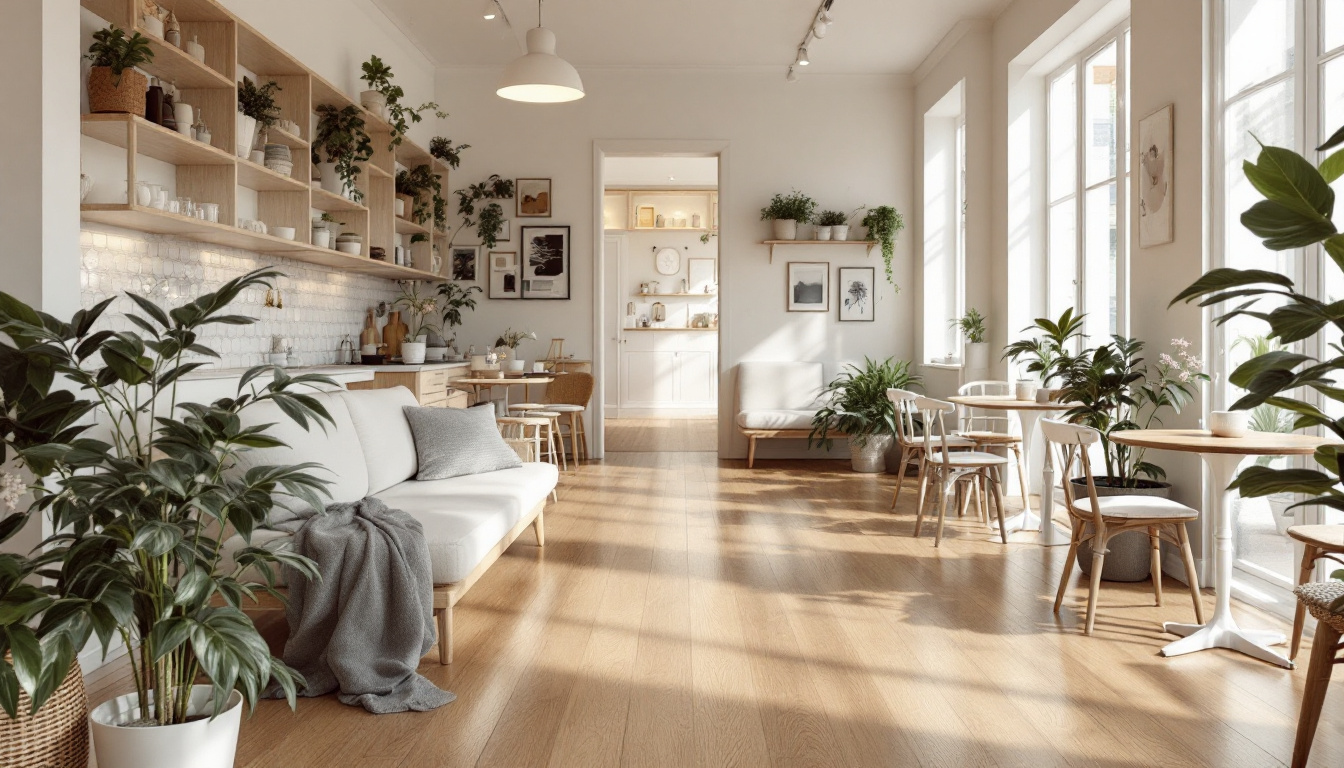
Consulting experts in wood floor finishing is crucial for hospitality spaces aiming to achieve the perfect balance between aesthetics and durability. Professionals bring invaluable insights into the selection process, helping to identify finishes that align with the specific needs of the venue. Their expertise ensures that the chosen finish not only complements the design of the space but also withstands the rigorous demands of high-traffic environments common in hospitality settings.
Key factors to consider when selecting a finish include the wear layer and the type of finishing system. The wear layer is critical as it determines the frequency of sanding and refinishing required over the floor’s lifespan. A thicker wear layer allows for more refinishing cycles, enhancing the floor’s longevity. Additionally, a hybrid floor finish system is often recommended. This method combines the robustness of site-finished floors with the practicality of off-site hand-oiling, allowing for easier future repairs without the disruption associated with on-site finishing.
For tailored advice and services, Ryan’s Restoration is highly recommended. Their expertise in professional floor finishing ensures that hospitality venues receive customised solutions that cater to both aesthetic desires and functional requirements. Engaging with professionals like Ryan’s Restoration guarantees that the flooring not only looks impeccable but also performs optimally in demanding hospitality environments.
Final Words
Choosing the right finish for wood floors in hospitality spaces crucially impacts durability, maintenance, and aesthetic appeal.
Throughout the article, various finish types were explored, highlighting their strengths in high-traffic environments.
Attention to slip resistance and eco-friendliness ensures both safety and sustainability.
Professional insights underline the need for expert consultation in selecting appropriate finishes.
By prioritising these considerations, hospitality venues can enhance both the functionality and visual appeal of their spaces, ensuring a superior experience for guests.
FAQ
What is the best finish for a wooden floor?
A: The choice of a floor finish depends on durability and visual preferences. Polyurethane offers high durability, while oil-based finishes provide a rich appearance. Always consider usage and traffic levels.
How do you choose a floor finish?
A: When choosing a floor finish, consider factors like durability, appearance, maintenance needs, and traffic levels. Consulting a flooring expert can provide tailored recommendations based on specific requirements.
Which material is the ideal floor finish for office spaces?
A: For office spaces, the ideal material combines durability and aesthetics. Polyurethane finishes are popular due to their resilience and ease of maintenance, suitable for high-traffic office environments.
How do you know what finish to use on a wood floor?
A: Consider the wood’s usage, desired aesthetics, and durability. Water-based finishes dry quickly, oil-based enhance richness, while varnish provides a glossy protective coat. Consult experts for specific advice.

